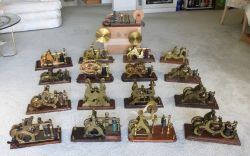With their large size and ornate machining, registers are probably the most impressive of the telegraph instruments. Registers were used to record the incoming Morse signal on a paper tape which was then read by the operator at the station; hence it was the first telegraph receiver. The earliest registers were weight driven, meaning they used a large weight on the end of a rope to turn the clockwork mechanism, much like the way an old Grandfather Clock works. These registers were “embossing” registers, meaning they did not use a pen and ink to mark the paper. Instead, they had a metal stylus that pressed against the paper, making a shallow dent (embossing). Later register designs from the late 1800s and beyond were spring-wound and used pen and ink to mark the paper tape.
Probably the most widely known register is the Vail Register which was used in the famous 1844 demonstration of the telegraph between the Capitol Building in Washington DC and Alfred Vail's home in Baltimore Maryland. There were 2 other registers patented by Samuel Morse: The 1846 register (patent #4453) which looks quite similar to the Vail Register, and the 1849 register (patent #6420) which is a more compact design. President Obama had the 1849 patent model on display in the Oval Office.
Below are some pictures of Telegraph Registers from the U.S., Europe, and Japan. Click on each thumbnail to view the full size image:
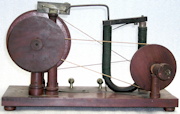 |
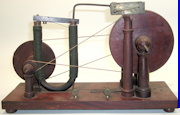 |
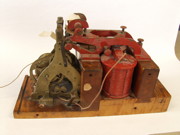 |
 |
| An Experimental Telegraph Register Made by James Green. Ca. Late 1830's (Smithsonian Museum) |
The Experimental Register Was Used by Rev. Henry Sheib of Baltimore and Samuel Morse for Demonstrations of the Telegraph Around 1838 |
Original Alfred Vail Register from the 1844 Demonstration |
Samuel Morse 1846 Register Patent Model (Smithsonian Museum) |
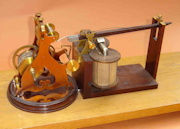 |
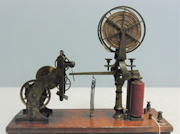 |
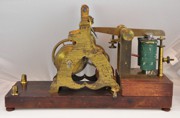 |
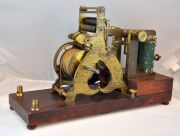 |
| A Nice Replica of the Morse 1846 Register Patent Model. Made in Germany in the 1930's |
Very Early Demonstration Register by Charles Grafton Page, Virginia. Ca. 1840's (Franklin Institute, Philadelphia Collection) |
Possibly Joseph Burritt, Ithaca NY, Ca. 1846 |
Another View of the Early Burritt Register |
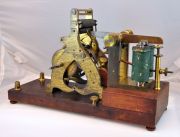 |
 |
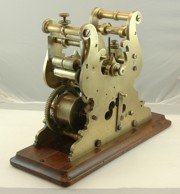 |
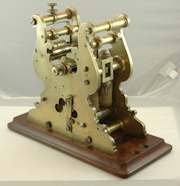 |
| A Third View of the Burritt Register |
The Morseograph. A Harp Style Register Made by William Clark & Son, Philadelphia. 1846-1847 |
Another View of the William Clark Morseograph |
A 3rd View of the Morseograph Showing the Large Wire Gauge Coils |
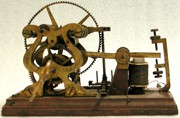 |
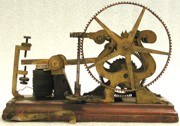 |
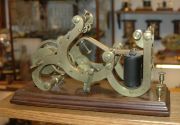 |
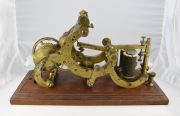 |
| Early William Clark Harp Register. Philadelphia. Ca. 1847 (Smithsonian Museum) |
Another View of the Clark Harp Register. The Large Geared Wheel Was Used to Run a Flywheel for Speed Control |
William Clark & Son, Philadelphia. Ca. 1847-1848 |
A Slightly Different Version of the Clark & Son Register. Ca. 1847-1848 |
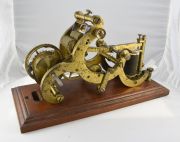 |
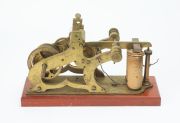 |
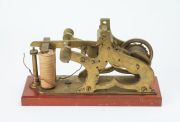 |
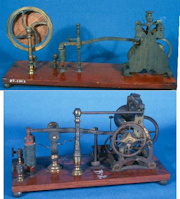 |
| Another View of the Clark & Son Register Showing the Ornamental "Engine Turning" on the Side of the Lever |
Joseph Burritt, Ithaca NY, Ca. 1848 (Smithsonian Museum) |
Another View of the Burritt Register (Smithsonian Museum) |
2 Very Early Demonstration Registers by Daniel Davis, Boston. Ca. 1848 (Wesleyan University Collection) |
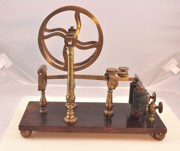 |
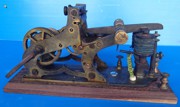 |
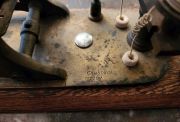 |
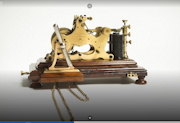 |
| Daniel Davis Demo Register, Boston. Ca. 1848 |
Very Early Chubbuck Register. Utica, NY. Ca. 1848 |
Close-Up of the Chubbuck Name |
Very Early Register by Edward N. Kent, NY. Used in Germany. Ca. 1848 (Museum of Communication, Berlin) |
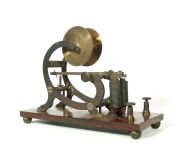 |
 |
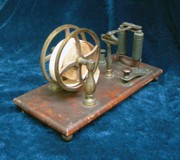 |
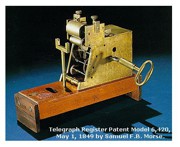 |
| Early Demonstration Register by Palmer & Hall (Successors to Daniel Davis), Boston. Ca. 1849 |
Another View of the Palmer & Hall Demo Register |
Another Palmer & Hall Demo Register Ca. 1849 |
Samuel Morse 1849 Patent Model |
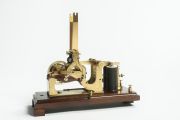 |
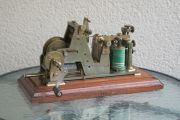 |
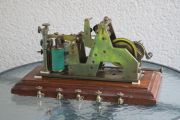 |
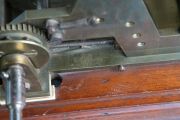 |
| Early Register Brought to Hamburg Germany by William and Charles B. Robinson (Possibly Made by SW Chubbuck), Ca. 1847 (Museum of Communication, Berlin) |
Very Early German Register by J. Lohmeier, Hamburg. Ca. 1848-1851 |
Another View of the Lohmeier Register. This Particular Instrument Was Found in Sweden, and the Binding Posts Appear to be of Swedish Design |
Close-Up of the Lohmeier Name |
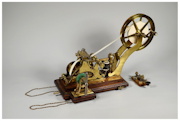 |
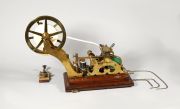 |
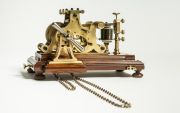 |
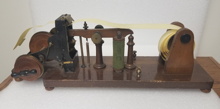 |
| Very Early German Register by Watchmaker Friedrich Heinrich Bruggemann. He Copied an Early Chubbuck/Kent Design. Ca. 1848-1850 (Museum of Communication, Berlin) |
Another View of the Bruggerman Register |
Another Very Early Register by Friedrich Heinrich Bruggerman. Again, Very Similar to the Edward N Kent Design (Museum of Communication, Berlin) |
Very Early Italian Weight-Driven Register by Carlo Dell'Acqua, Milano. Ca. 1848-1850 |
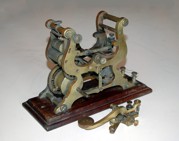 |
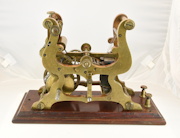 |
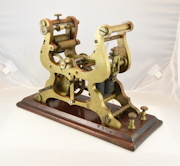 |
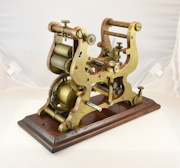 |
| James J. Clark Harp Register & Matching Camelback Key. Ca. 1848-1850 |
Front View of the Harp Register by James J. Clark, Philadelphia. Ca. 1848-1850 |
Another View of the James Clark Harp Register |
A Third View of the James Clark Harp Register |
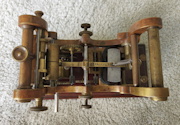 |
 |
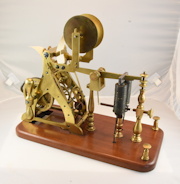 |
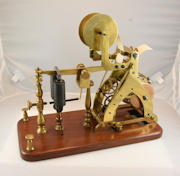 |
| Top View of the Harp Register Showing the Clark Name |
Comparison of the Original William Clark Morseograph (Left) With His Son James Clark's Harp Register (Right) |
Early Register by Palmer & Hall, Boston. Ca. 1850 |
Another View of the Palmer & Hall Register |
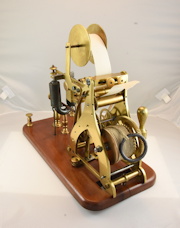 |
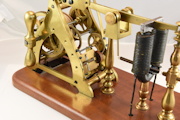 |
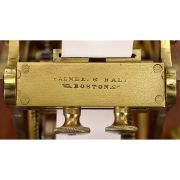 |
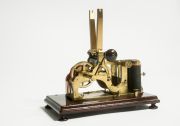 |
| A 3rd View of the Palmer & Hall Register |
A 4th View of the Palmer & Hall Register |
Close-Up of the Palmer & Hall Name Stamp |
Very Early German Register. Johann Wilhelm Hinrich Brocking. Ca. 1850 (Museum of Communication, Berlin) |
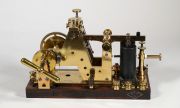 |
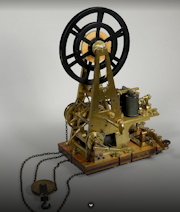 |
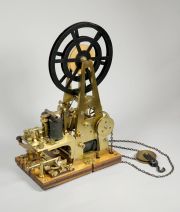 |
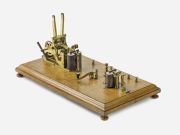 |
| Early German Register by Carl Friedrich Lewert, Berlin. Ca. Early 1850's (Museum of Communication, Berlin) |
Very Early Key & Register Set by Beneche & Wasserlein. Ca. 1852 (Museum of Communication, Berlin) |
Another View of the German Key & Register Set by Beneche & Wasserlein |
Very Early Register, Key, and Relay Set Brought to Hamburg Germany by William and Charles B Robinson. (Possbily Made by SW Chubbuck). Ca. 1847 (Museum of Communication, Berlin) |
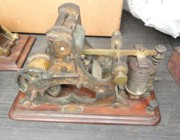 |
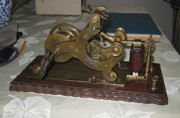 |
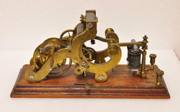 |
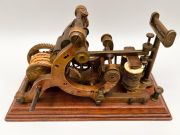 |
| Hinds & Williams, Boston. Ca. Early 1850's |
JW Norton, NY. Ca. Early 1850's |
Henry J. Rodgers, NY. Ca. 1850's |
James J. Clark Register With H.B.R.R Marking (Hanover Branch Railroad, Pennsylvania). Ca. 1850's |
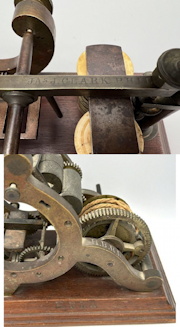 |
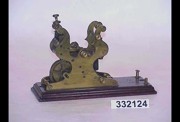 |
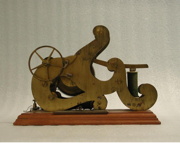 |
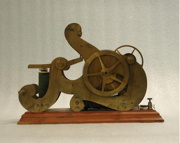 |
| Close-Up of the James Clark Name and H.B.R.R. Marking |
James Clark Harp Register. Ca. 1850's |
Self-Winding Register by James Clark, Philadelphia. 1853 |
Another View of the Clark Self-Winding Register |
 |
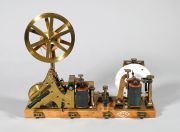 |
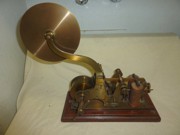 |
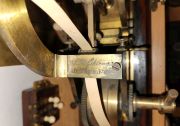 |
| Early Register by the Watchmaker Lorenz Bob. Ca. 1850's (Museum of Communication, Berlin) |
Early German Register & Relay by G. Wernicke. Ca. 1850's (Museum of Communication, Berlin) |
JH Eckling, Austria. Ca. 1850's |
Close-Up of the JH Ekling Name |
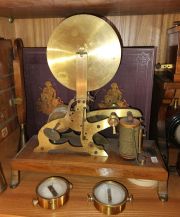 |
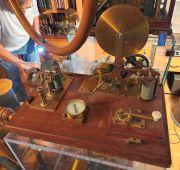 |
 |
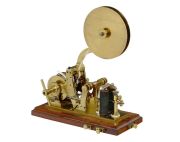 |
| An Early Austrian Register by Johann Leopolder. Ca. 1850's. Note the Similarity in Design to the Early Chubbuck Register |
A Similar Leopolder Register, Part of a Key/Relay/Galvanometer/Register Set |
Early German Weight Driven Register by Carl Sickler. Carlsruhe Germany. Ca. 1855 |
Austrian Register by K.K.T.W. (Kaiserliche Konigliche Telegraphen Werstatte, Which Means "Imperial Royal Telegraph Workshops"). Likely Made by JH Ekling. Ca. 1850's |
 |
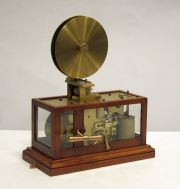 |
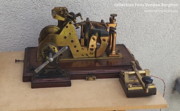 |
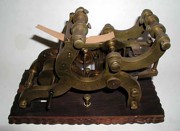 |
| Early Swiss Weight-Driven Register by Matthäous Hipp. ETW Suisse (Eidgenössische Telegraphen Werkstätte, Which Means "Federal Telegraph Workshop"). Ca. 1850's |
Another Swiss Register by Matthäous Hipp. Ca. 1850's (Museum of Communication, Berlin) |
Early German Weight-Driven Register by Siemens-Halske. Ca. 1854 |
Unknown Early Register. Ca. 1850's |
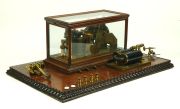 |
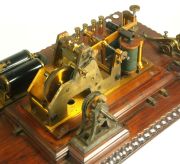 |
 |
 |
| A Beautiful Combination Set Consisting of a Register, Camelback Key & Relay. Charles Chester, NY. Ca. Late 1850's (Museum Victoria, Australia) |
A Close-Up of the Chester Register With the Glass Cover Removed |
A Close-Up of the Charles Chester Camelback Key |
Another Combination Set by Charles Chester, NY. Ca. Late 1850's (Museum Victoria, Australia) |
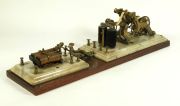 |
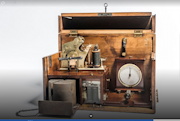 |
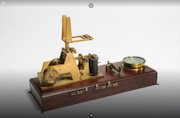 |
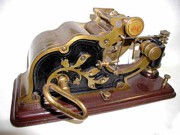 |
| Another View of the Charles Chester Combination Set |
A Portable Telegraph Set by Siemens-Halske. Ca. Late 1850's (Museum of Communication, Berlin) |
Early German Telegraph Set by Siemens & Halske With a Register, Key, and Relay. Ca. 1850-1852 (Museum of Communication, Berlin) |
Thomas Hall, Boston. Ca. 1860 |
 |
 |
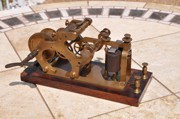 |
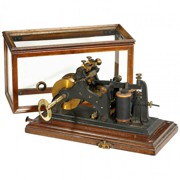 |
| An Unpainted Version of the Previous Thomas Hall Register. From the Delaware & Hudson Transportation Department (Smithsonian Museum) |
Another View of the Unpainted Hall Register (Smithsonian Museum) |
Caton Instrument Shops, Ottawa Illinois. Ca. 1860 |
German Weight-Driven Register. Siemens. Ca. 1860 |
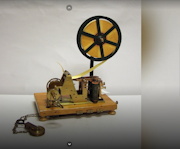 |
 |
 |
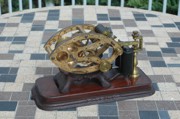 |
| Weight-Driven Register by Siemens &Halske. Ca. 1850 (Museum of Communication, Berlin) |
Early Swedish Register by PM Sorensen, Stockholm. Ca. 1860 |
Close-Up of the Sorensen Nameplate |
GM Phelps, NY. "Football" Register. Ca. Early 1860's |
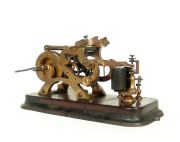 |
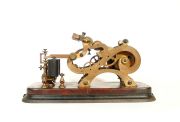 |
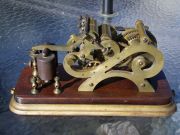 |
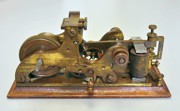 |
| GM Phelps, NY. Ca. 1860's |
Another View of the Phelps Register |
A Phelps Register with a Different Anvil Design |
AS Chubbuck, Utica NY. Ca. 1860's |
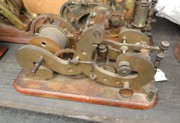 |
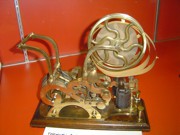 |
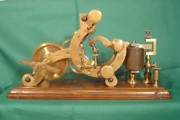 |
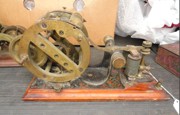 |
| Charles Chester, NY. Ca. 1860's |
Charles Williams, Boston. Ca. 1860's (Edison Museum, Ft. Myers FL) |
Charles Williams, Boston. Ca. 1860's |
Thomas Hall, Boston. Ca. 1860's |
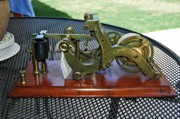 |
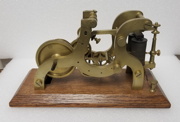 |
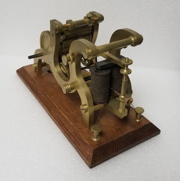 |
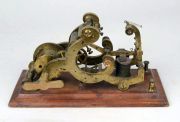 |
| Charles T & JN Chester, NY. Ca. 1860's |
JS Keeling, NY. Ca. 1865 |
Another View of the Keeling Register |
A Keeling Register of Different Design |
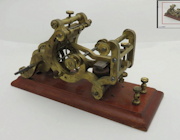 |
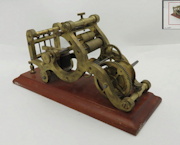 |
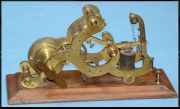 |
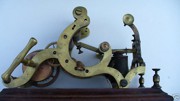 |
| Clark & Splitdorf. Ca. 1865 (Smithsonian Museum) |
Another View of the Clark & Splitdorf Register (Smithsonian Museum) |
Weight-Driven Register With Markings From Both JS Keeling and EM Pierson. Likely Made by Pierson as the Hardware Matches Other Pierson Instruments |
James Clark, Philadelphia. Ca. Mid 1860's |
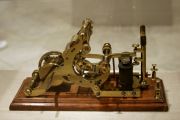 |
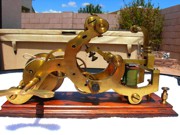 |
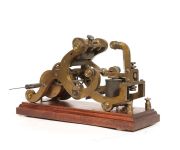 |
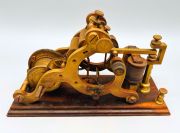 |
| An Unmarked Register Possibly Made by James Clark |
LG Tillotson, NY. Ca. 1860's |
Another View of the Tillotson Register |
A Tillotson Register of Different Design |
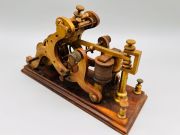 |
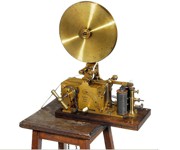 |
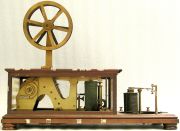 |
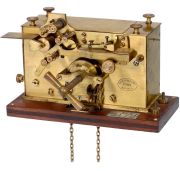 |
| Another View of the Tillotson Register |
Early German Weight-Driven Register. Ca. 1860's |
Early French Register by Breguet. Ca. 1860's (Smithsonian Museum) |
Late Model Weight-Driven Register by Wiesenthal & Co. Aaachen Germany |
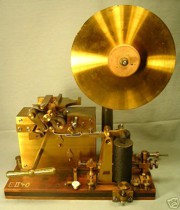 |
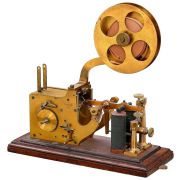 |
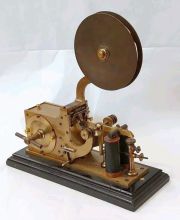 |
 |
| Early Register by Carl Friedrich Lewert, Berlin. Ca. 1869 (Museum of Communication, Berlin) |
A Small Register by Leopolder, Vienna Austria. Ca. 1870 |
Spring Wound Register by W. Wolters, Vienna Austria. Ca. 1870 |
Close-Up of the Wolters Name |
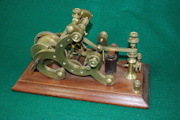 |
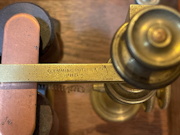 |
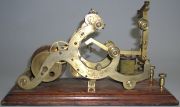 |
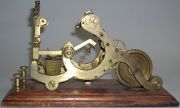 |
| Flemming-Potter & Co, Philadelphia. Ca. 1870 |
Another View of the Flemming-Potter Register |
Knox & Shain, Philadelphia. Ca. 1870 (Smithsonian Museum) |
Another View of the Knox & Shain Register (Smithsonian Museum) |
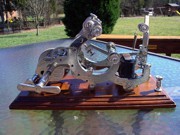 |
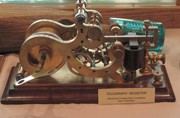 |
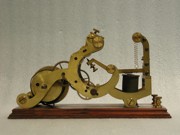 |
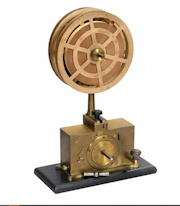 |
| A Nickel Plated Version of the Knox & Shain Register, Philadelphia. Ca. 1870 |
Electrical Construction Co, San Francisco. Ca. 1872 |
George Bliss, Chicago. Ca. Early 1870's (Smithsonian Museum) |
Relief Writer by Siemens-Halske. Ca. 1870's. Used to Punch a Paper Tape |
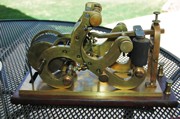 |
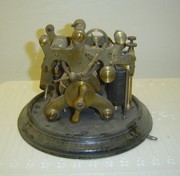 |
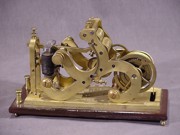 |
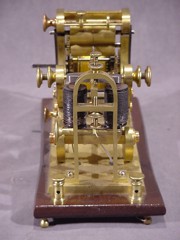 |
| Charles T Chester, NY. Ca. 1870's |
Hochhausen, NY. Ca. 1875 |
A Very Late Weight-Driven Register by Partrick-Bunnell, Philadelphia, Ca. 1872 |
Another View of the Partrick-Bunnell Register. The Design is Nearly Identical to the Later Registers Made by Charles Chester, NY |
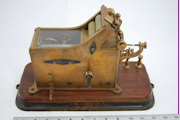 |
 |
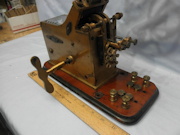 |
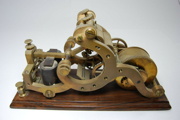 |
| GM Phelps Spring Wound Register. Ca. 1875 |
An Unmarked Spring Wound Register of Similar Design to the GM Phelps Register, But With 2 Embossing Levers. Possibly Made by Western Electric. Ca. Late 1870's |
A Different View of the Double Lever Embossing Register |
Spring-Wound Register by L.G. Tillotson, NY. Ca. 1870s |
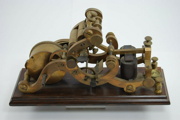 |
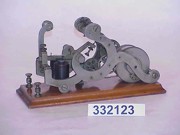 |
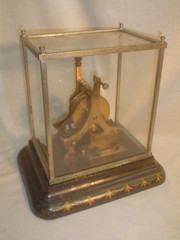 |
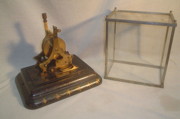 |
| Another View of the Tillotson Spring-Wound Register |
Early Spring Wound Register Styled Like a Tillotson Weight-Driven Register. JH Bunnell, NY. Ca. Late 1870's (Smithsonian Museum) |
Frederick-Pearce, NY. Ca. Late 1870's |
Another View of the Frederick-Pearce Register |
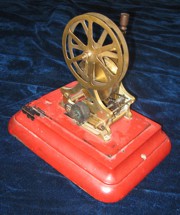 |
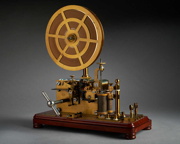 |
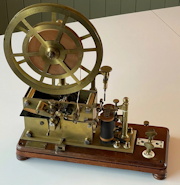 |
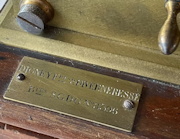 |
| Frederick-Pearce, NY. Ca. 1880 |
French Register by Digney |
French Register by Digney-Freres |
Close-Up of the Digney-Freres Nameplate |
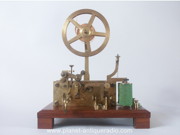 |
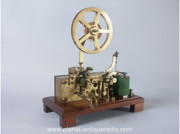 |
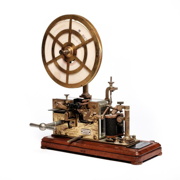 |
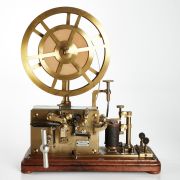 |
| A Small Embossing Register by Breguet |
Another View of the Breguet Embossing Register |
Swedish Register by Anton Oller. Ca. 1880's |
Another View of the Oller Register |
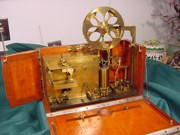 |
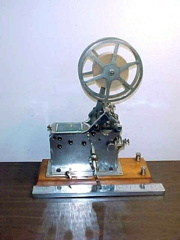 |
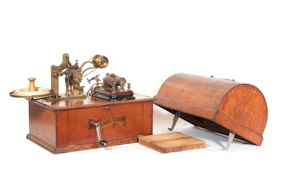 |
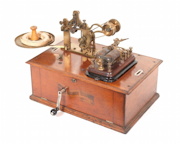 |
| Oki Japanese Boxed Register & Key. 1890 |
A Later Embossing Register Possibly Made by ES Greeley, NY. Ca. 1890s |
Weiny-Phillips Printing Telegraph. JH Bunnell, NY. Ca. 1890s |
Another View of the Weiny-Phillips Printing Telegraph |
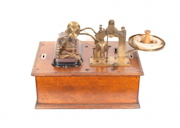 |
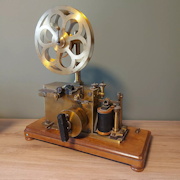 |
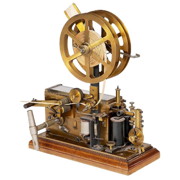 |
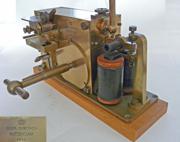 |
| A Third View of the Weiny-Phillips Printing |
A Small German Register by Gurlt |
A Swiss Register by Hasler & Escher, Bern |
Dutch Register Made by Caminada, Rotterdam (PA3EGH Collection) |
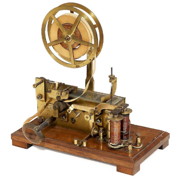 |
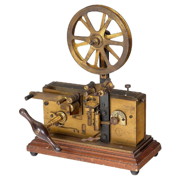 |
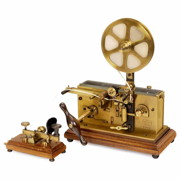 |
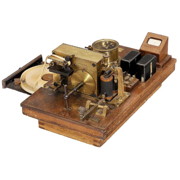 |
| A Dutch Register Made by Funckler, Haarlem |
An Italian Register by Standard Elettrica Italiana |
An Italian Register by Societa Telefonica Lombarda |
A Combination Set Consisting of a Key, Register, Galvanometer, and Relay by Siemens-Halske |
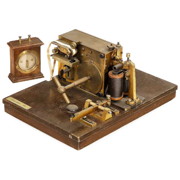 |
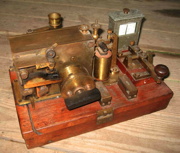 |
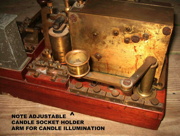 |
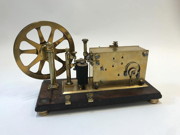 |
| Another Siemens-Halske Key & Register Set With a Galvanometer on the Side |
French Key, Register & Galvanometer Set by Ste. Indelle des Telephones |
Another View of the French Combination Set Showing an Unusual Candle Holder Attachment to Provide Illumination for the Operator |
French Register by Vinay |
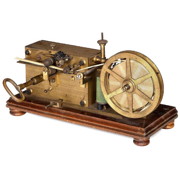 |
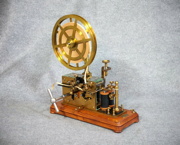 |
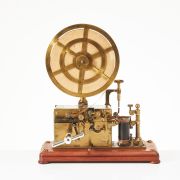 |
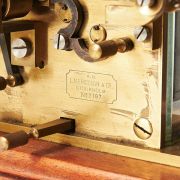 |
| French Register-Breguet. Ca. 1900 |
Swedish Register-LM Ericsson. Ca. 1900 |
Another View of the Ericsson Register |
Close-Up of the Ericsson Name |
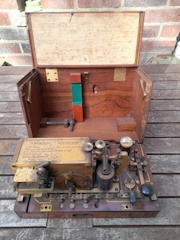 |
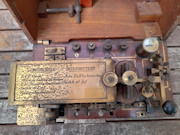 |
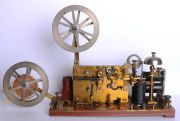 |
 |
| A Boxed Portable Key, Register, and Galvanometer Set by Siemens. Ca. 1900 |
A Top View of the Siemens Portable Set |
A Very Complex Swedish Key & Register Set by LM Ericsson |
Danish Register-Evald Andersens, Copenhagen. Ca. 1900 |
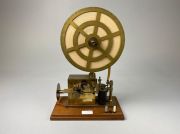 |
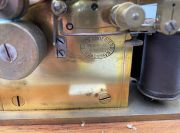 |
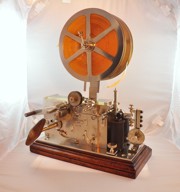 |
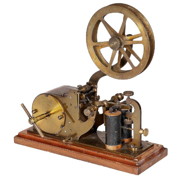 |
| A Small Register by Evald Andersens, Copenhagen. Ca. 1900 |
Close-Up of the Andersens Name Stamp |
Swiss Register. Hasler & Escher. 1909 |
Austrian Register. Nissl & Co. Vienna. Ca. Early 1900's |
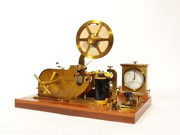 |
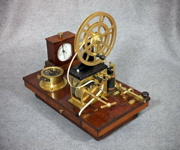 |
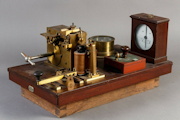 |
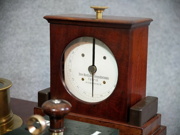 |
| Austrian Register, Key, and Galvanometer on Board |
A Danish Key, Register, and Galvanometer Set by Store Nordiske Telegrafselskabs. The Register Was Made by Siemens & Halske |
Another Similar Danish Set Minus the Tape Wheel |
Close-Up of the Name on the Galvanometer |
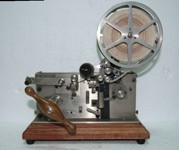 |
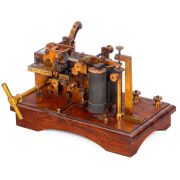 |
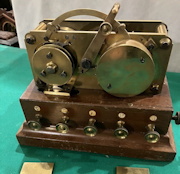 |
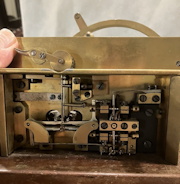 |
| Italian Register. Ca. Early 1900's |
Telegraph Inking Register by Siemens Brothers, London. Ca. Early 1900's |
British Wheatstone Register. Ca. Early 1900's |
A View Inside the Wheatstone Register |
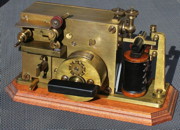 |
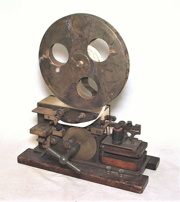 |
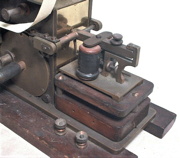 |
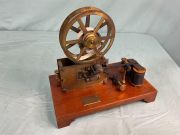 |
| Small German Register by Gebrueder-Naglo, Berlin. Early 1900's |
Unusual Australian Register Used by Victoria Railways |
Close-Up of the Australian Register Showing the Lever That Forms Part of a Sounder |
Early French Demonstration Register by Adolphe Gaiffe, Paris. Ca. 1890 |
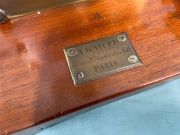 |
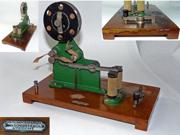 |
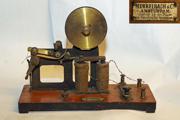 |
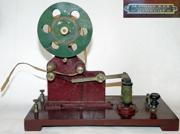 |
| Close-Up of the Gaiffe Nameplate |
Dutch Demonstration Register by Van Sonsbeek & Co, Utrecht (PA3EGH Collection) |
Dutch Demonstration Register by Merkelbach & Co, Amsterdam (PA3EGH Collection) |
Dutch Demonstration Register by M. Prins & Co, Utrecht (PA3EGH Collection) |
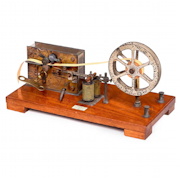 |
 |
 |
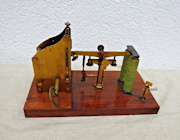 |
| Demonstration Register by J. Leemans, Brussels Belgium. Ca. 1920 |
Romanian Demonstration Register |
Close-Up of the Nameplate on the Romanian Register |
German Demonstration Register |
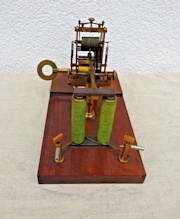 |
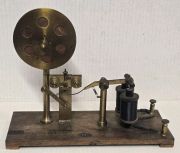 |
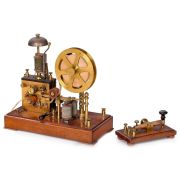 |
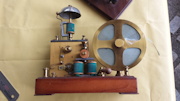 |
| Another View of the German Demo Register |
A Small German Demonstration Register by PHYWE |
French Demo Register & Key. Early 1900's |
Another Similar Small French Demo Register |
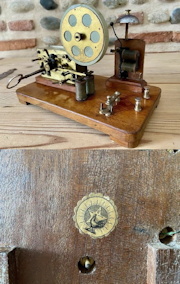 |
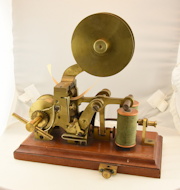 |
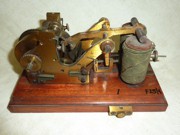 |
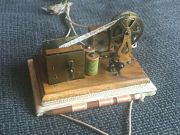 |
| A French Demo Register by Pericaud |
A Small Austrian Demonstration Register |
Another Small Demonstration Register Similar to the Previous Register |
A Hungarian Novelty Key & Register Attached to a Dance Card. 1915 |
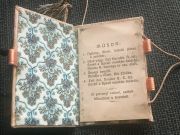 |
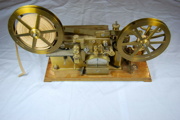 |
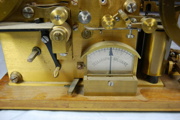 |
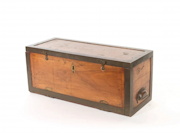 |
| A View Inside the Dance Card. Measures Only 87x60mm |
Register, Key & Galvanometer Set Used by the French Military |
Another View of the French Military Set |
Italian Army Register, Key, and Galvanometer in Carrying Case by Pio-Pion, Ca. 1920 |
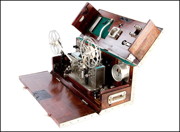 |
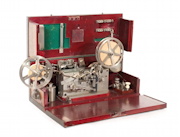 |
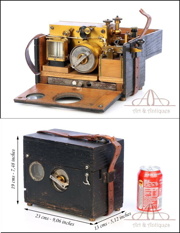 |
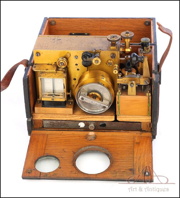 |
| Inside the Pio-Pion Register |
Another View of the Pio-Pion Register Set |
Compact Portable Set with Register, Key, and Galvanometer. Maker Unknown, Probably German |
Another View of the Portable Register Set |
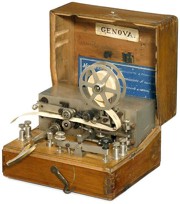 |
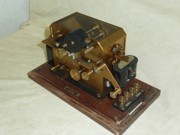 |
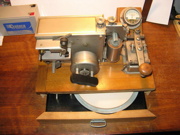 |
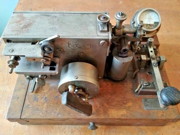 |
| Miniature Italian Key & Register Set. Just 4.5" Wide |
Oki Japanese Register. 1939 |
Australian Key, Register & Galvanometer Set |
Russian Register, Key, and Galvanometer Set. Ca. Early 1940's |
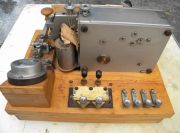 |
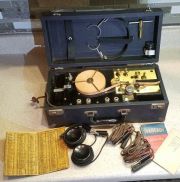 |
 |
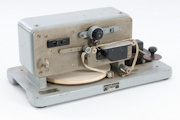 |
| The Back Side of the Russian KROB |
Unusual Register Built Into a Carrying Case. Made by Foote-Pierson, NY |
Register Contains a Sheet Listing Codes Associated With Different Cities. If Anyone Knows How This Register was Used, Please Let me Know |
Danish Register & Key by Great Northern Telegraph Co. Made in 1960 |
| |
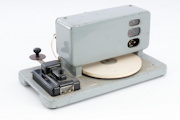 |
|
|
| |
The Back Side of the GNT Register |
|
|
